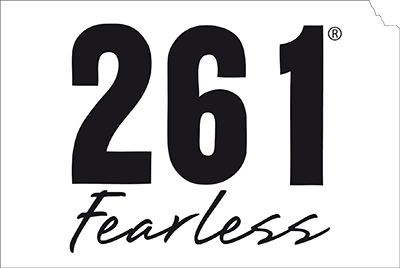Shin splints
Shin splint pain comes on when you run. It might be there as soon as you start running or develop after a while on your feet. It’s felt on the front of your lower leg, often just to the medial (inner) side. It usually feels tender to touch generally in that area. It can happen on one or both sides. The pain goes away when you stop running and rest.
When do shin splints happen?
Although the mechanism of shin splints isn’t certain, they do seem to be linked to overuse. So, a new runner who is feeling enthusiastic and heading out for lots of runs, or a more experienced runner who is quickly cranking up their miles, are both at risk. Being overweight is another risk factor for shin splints and women are more likely to be affected than men. The positioning of your body when you run is called your running biomechanics. Poor biomechanics can mean an increased chance of shin splints. This could be a muscular weakness or imbalance in your core, hips, knees or ankles that has a knock-on effect on to your lower legs and feet and puts you at higher risk of shin problems.
How are shin splints treated?
If your shins are sore, then applying ice packs and using pain killers is the first aid treatment. Rest however is the most important thing. After around two to four weeks the pain and tenderness should go and you can slowly begin to run again. You can keep up your fitness during this time by doing exercises that don’t trigger the pain. Try cycling or swimming. It’s a really good idea to see a sports physiotherapist to figure out why you have had shin splints. Working on weaknesses and imbalances and having a slow, graded return to running may be all that is needed. This is particularly important if you have had shin splints before; recurrent problems usually have an underlying cause.
How can I prevent shin splints?
Gradually increasing your running frequency and distance, running on softer ground and strengthening your calf muscles are all things that can help prevent shin splints. Make sure you have plenty of rest days to allow the bones and muscles to adapt to the demands you are placing on them. Working on good running form and technique and seeing a physiotherapist to assess your running gait and biomechanics can both help stop shin problems. It’s not clear how important foot placement is when it comes to preventing shin splints but if you have significant pronation of your feet when you run then being assessed for the right shoes for your feet may make a difference.
How do I know it isn’t a break in the bone?
Any pain that keeps coming back is significant and shouldn’t be ignored. Another warning sign is pain that you get at rest, so if the shin pain doesn’t ease up when you stop running or affects you at night, it definitely needs checking out by a medical professional. Similarly, if there is one particular point on your shin that hurts when you press it, rather than a general tenderness, then this can also be a sign of a more serious bony injury.
Don’t be disheartened, recovery can take time but is achievable and we all know that the patience and hard work is worth it if it keeps you running.
Numb Feet
Numbness or pins and needles in one or both your feet when running is a common complaint. It isn’t usually anything to worry about but it can be frustrating and annoying and very occasionally it is a sign of something more serious.
Here are some simple things you can try to stop it happening and advice on when you should seek expert help.
Loosen your laces
The superficial nerves in the skin don’t like being squashed! Even if your laces feel loose enough when you start, your feet can swell when you run, especially over long distances.
Lace up differently
Everybody’s feet are individual and you can adapt your lacing style to fit your foot shape. For example, a high foot arch or wide forefoot might benefit from a lacing pattern which takes the pressure off those areas. Search online for different techniques.
Go up a size
Sounds simple but sometimes our running shoes just aren’t big enough. Go up at least half a size from your regular shoes. Remember that our feet change as we get older, particularly after pregnancy, so your foot size and width can alter. If you have wide feet you might benefit from a men’s shoe.
Change your brand
Runners often get very loyal with their running shoes but if you are having problems then it sometimes worth trying a new model or even a new brand.
Simple shoe issues can be sorted out in a good running shop with a variety of shoes and a treadmill for you to try them out on but recurrent and stubborn numbness problems are best assessed by a podiatrist. Other structures in the foot can compress the nerves. Swollen muscles, cysts and overgrowths of bone can all do this. Sometimes a foot nerve becomes thickened, this is known as a Morton’s neuroma. Problems like these and with the biomechanics of the foot require specialist guidance. Custom made insoles and specific exercises can be used to address muscle imbalances and make the foot more comfortable.
It’s important to know that occasionally, foot numbness can be due to underlying medical conditions. When the nerves in the extremities are affected it is called a peripheral neuropathy and this can occur in diabetes, hypothyroidism (underactive thyroid), alcoholism and some vitamin deficiencies including B12.
You should see your doctor for an assessment if:
- Both feet are affected
- You get numbness at times when you aren’t running
- You have other symptoms that might suggest an underlying cause such as fatigue, weight loss, urinary frequency or leg swelling.
Iliotibial Band Syndrome (ITBS)
Lots of things can hurt when you start to run. A few twinges and aches can be normal when you’re asking your body to do something it isn’t used to doing. The excitement of discovering you can run, when you may not have thought it was possible, and the joy of being on the road, can lead you to going too far too soon. Injury is then just around the corner so it’s wise to take your time. The iliotibial band (ITB) is one part of the body which is particularly problematic to runners of all abilities who are quickly increasing their running distance or frequency. Many, many runners have experienced iliotibial band syndrome so it’s worth being informed about it.
What is ITBS
The ITB is a tough, fibrous band of tissue that runs from the hip along the outer aspect of the thigh and attaches into the knee. You can feel pain anywhere along the ITB but the most frequent site is at the knee. It’s not uncommon for runners to think they have a knee problem when in fact the issue is the ITB. We don’t really understand why the ITB causes pain but it’s probably not as simple as purely friction of the tissue against surrounding structures. Women are affected more often than men so anatomy, such as a wider pelvis and the angle of the thigh bones are almost certainly involved. Biomechanics and running gait have a role to play too. Pain tends to come on during running, usually about the same distance into a run.
What to do if you have ITBS
ITBS can be incredibly frustrating. Just when you’re running well and increasing your distance you find you can’t carry on. ITBS usually settles in a couple of months, though some people may be affected for six months or longer. The key is allowing it to settle, working on weaknesses in your body that may be underlying and exacerbating it and then building up your running slowly again.
Here are some tips for runners with ITBS:
· Reduce your running distance, you may have to stop running completely for a while if running causes pain
· Try other activities such as walking or swimming meantime
· Do daily ITB stretches
· Massage and foam rolling during ITBS are controversial; do what feels good
· See a physiotherapist that specialises in running gait to identify underlying weaknesses
· Strengthening the glute and hip muscles with body weight and resistance band exercises can help
· Restart running gradually, with good posture and continue the strength work and stretching.


